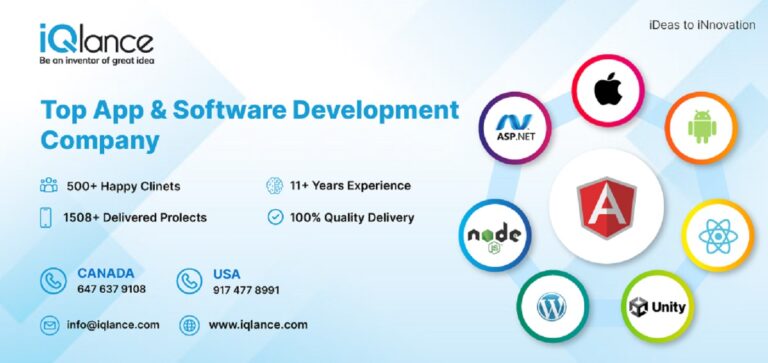Unleash the power of AWS Lambda and revolutionize your serverless architecture.
Introduction to AWS Lambda and its Benefits in Serverless Architecture
AWS Lambda is a powerful service offered by Amazon Web Services (AWS) that allows developers to run code without the need to provision or manage servers. It is a key component of serverless architecture, which has gained popularity in recent years due to its scalability, cost-effectiveness, and ease of use.
Serverless architecture, as the name suggests, eliminates the need for traditional servers. Instead, developers can focus solely on writing code and let the cloud provider handle the infrastructure. This approach offers several benefits, including reduced operational costs, increased scalability, and improved developer productivity.
One of the main advantages of using AWS Lambda in a serverless architecture is its ability to scale automatically. With traditional servers, scaling can be a complex and time-consuming process. However, with Lambda, scaling is handled automatically by AWS. When a function is triggered, Lambda provisions the necessary resources to execute the code and then releases them when the function completes. This ensures that resources are only used when needed, resulting in cost savings and improved performance.
Another benefit of using AWS Lambda is its pay-per-use pricing model. With traditional servers, you typically pay for the capacity you provision, regardless of whether it is fully utilized or not. In contrast, Lambda charges you only for the actual compute time consumed by your functions. This means that you only pay for what you use, making it a cost-effective solution, especially for applications with unpredictable or variable workloads.
AWS Lambda also offers seamless integration with other AWS services, such as Amazon S3, DynamoDB, and API Gateway. This allows developers to build complex applications by combining different services without the need for additional infrastructure management. For example, you can create a serverless web application by using Lambda to handle the backend logic, S3 to store static assets, and API Gateway to expose RESTful APIs. This level of integration simplifies development and reduces the time and effort required to build and deploy applications.
In addition to its technical benefits, AWS Lambda also provides a high level of flexibility. It supports multiple programming languages, including Node.js, Python, Java, and C#. This allows developers to choose the language they are most comfortable with and leverage their existing skills and knowledge. Furthermore, Lambda functions can be easily triggered by a variety of events, such as changes to data in a database, file uploads, or HTTP requests. This flexibility enables developers to build event-driven architectures and respond to real-time events in a scalable and efficient manner.
In conclusion, AWS Lambda is a powerful service that plays a crucial role in serverless architecture. Its automatic scaling, pay-per-use pricing, seamless integration with other AWS services, and flexibility make it an attractive choice for developers looking to build scalable and cost-effective applications. By leveraging Lambda, developers can focus on writing code and delivering value to their users, while leaving the infrastructure management to AWS. Whether you are building a small web application or a large-scale enterprise system, AWS Lambda and serverless architecture can help you achieve your goals efficiently and effectively.
How to Build and Deploy Serverless Applications with AWS Lambda
AWS Lambda is a powerful service offered by Amazon Web Services that allows developers to build and deploy serverless applications. With Lambda, developers can focus on writing code without having to worry about managing servers or infrastructure. In this article, we will dive into the world of AWS Lambda and explore how to build and deploy serverless applications using this service.
To get started with AWS Lambda, you first need to understand the concept of serverless architecture. Serverless architecture is a cloud computing model where the cloud provider manages the infrastructure and automatically provisions and scales resources as needed. This allows developers to focus on writing code and building applications without the need to manage servers or worry about infrastructure.
AWS Lambda is a key component of serverless architecture. It allows you to run your code without provisioning or managing servers. With Lambda, you can write your code in a variety of programming languages, including Node.js, Python, Java, and C#. Lambda takes care of all the operational aspects, such as scaling, patching, and monitoring, so you can focus on writing code that solves your business problems.
To build a serverless application with AWS Lambda, you start by creating a Lambda function. A Lambda function is the code that gets executed in response to an event. Events can be triggered by various AWS services, such as Amazon S3, Amazon DynamoDB, or even API Gateway. You can also create custom events using services like Amazon CloudWatch Events.
Once you have created your Lambda function, you can configure it to handle the event and perform the necessary actions. For example, if you have a Lambda function that is triggered by an S3 event, you can write code to process the uploaded file and store the results in a database.
To deploy your Lambda function, you need to package your code and any dependencies into a deployment package. AWS Lambda supports various deployment package formats, including ZIP files and container images. You can use the AWS Command Line Interface (CLI) or the AWS Management Console to upload and deploy your Lambda function.
After deploying your Lambda function, you can test it using the AWS Management Console or the AWS CLI. You can provide sample event data to simulate the actual event that would trigger your Lambda function. This allows you to verify that your code is working correctly before integrating it into your application.
AWS Lambda provides a range of features to help you monitor and troubleshoot your serverless applications. You can use Amazon CloudWatch to collect and analyze logs and metrics from your Lambda functions. You can also enable X-Ray tracing to gain insights into the performance and behavior of your functions.
In conclusion, AWS Lambda is a powerful service that allows developers to build and deploy serverless applications. With Lambda, you can focus on writing code without having to worry about managing servers or infrastructure. By understanding the concept of serverless architecture and following the steps to build and deploy a Lambda function, you can take advantage of the benefits of serverless computing and accelerate your application development.
Exploring Event-Driven Architecture with AWS Lambda and Serverless Framework
Dive into AWS Lambda and serverless architecture
In today’s fast-paced world, businesses are constantly looking for ways to optimize their operations and reduce costs. One of the ways they are achieving this is by adopting serverless architecture, which allows them to focus on their core business logic without worrying about managing servers. AWS Lambda, a serverless computing service provided by Amazon Web Services (AWS), is at the forefront of this revolution.
AWS Lambda is an event-driven computing service that runs your code in response to events, such as changes to data in an Amazon S3 bucket or a new record being inserted into a DynamoDB table. It allows you to build applications without provisioning or managing servers, making it an ideal choice for microservices, real-time file processing, and data transformation tasks.
To get started with AWS Lambda, you can use the Serverless Framework, an open-source framework that simplifies the deployment and management of serverless applications. The Serverless Framework provides a command-line interface (CLI) that allows you to create, deploy, and manage your serverless functions and resources with ease.
Event-driven architecture is a key concept in serverless computing. It allows you to build applications that respond to events in real-time, enabling you to create highly scalable and responsive systems. With AWS Lambda, you can define event sources, such as Amazon S3, Amazon DynamoDB, or Amazon Kinesis, and write code that gets executed whenever an event occurs. This event-driven approach allows you to build applications that are decoupled and highly scalable, as each function can be independently scaled based on the incoming workload.
One of the main advantages of using AWS Lambda and serverless architecture is the cost savings it offers. With traditional server-based architectures, you need to provision and pay for servers even when they are not being used. With AWS Lambda, you only pay for the compute time that your code actually consumes. This pay-per-use model allows you to significantly reduce your infrastructure costs, as you no longer need to pay for idle resources.
Another benefit of using AWS Lambda is the automatic scaling it provides. As the number of incoming events increases, AWS Lambda automatically scales out to handle the workload. This means that you don’t need to worry about provisioning additional servers or managing the scaling process yourself. AWS Lambda takes care of all the scaling for you, ensuring that your application can handle any amount of incoming traffic.
AWS Lambda also provides built-in monitoring and logging capabilities, allowing you to easily track the performance and behavior of your functions. You can view metrics such as invocation count, error rate, and duration, and set up alarms to notify you when certain thresholds are exceeded. This helps you identify and troubleshoot any issues in your application quickly, ensuring that it is running smoothly and efficiently.
In conclusion, AWS Lambda and serverless architecture are revolutionizing the way businesses build and deploy applications. By adopting an event-driven approach and leveraging the power of AWS Lambda, you can build highly scalable and responsive systems that are cost-effective and easy to manage. With the Serverless Framework, you can simplify the deployment and management of your serverless applications, allowing you to focus on your core business logic. So why wait? Dive into AWS Lambda and serverless architecture today and unlock the full potential of your applications.
Best Practices for Optimizing Performance and Cost in AWS Lambda
AWS Lambda is a powerful service offered by Amazon Web Services that allows developers to run code without provisioning or managing servers. It is a key component of serverless architecture, which has gained popularity in recent years due to its scalability, cost-effectiveness, and ease of use. In this article, we will explore some best practices for optimizing performance and cost in AWS Lambda.
One of the first things to consider when using AWS Lambda is the choice of runtime. AWS Lambda supports multiple runtimes, including Node.js, Python, Java, and C#. Choosing the right runtime for your application is crucial as it can significantly impact performance. Each runtime has its own strengths and weaknesses, so it is important to evaluate your application’s requirements and select the runtime that best suits your needs.
Another important aspect to consider is the memory allocation for your Lambda functions. AWS Lambda allows you to specify the amount of memory allocated to each function, ranging from 128 MB to 10 GB. It is important to choose an appropriate memory size based on your application’s requirements. Allocating too little memory can result in slower execution times, while allocating too much memory can lead to unnecessary costs. It is recommended to perform load testing and monitor the performance of your functions to determine the optimal memory allocation.
In addition to memory allocation, the execution time of your Lambda functions is also a critical factor to consider. AWS Lambda charges based on the number of requests and the duration of each request. Therefore, optimizing the execution time of your functions can help reduce costs. One way to improve performance is to minimize the cold start time, which is the time it takes for a function to start running after being idle for a period of time. Cold starts can significantly impact the overall performance of your application, so it is important to minimize them by keeping your functions warm or using techniques such as provisioned concurrency.
Another best practice for optimizing performance and cost in AWS Lambda is to leverage the power of concurrency. AWS Lambda allows multiple instances of a function to run concurrently, which can greatly improve performance. By configuring the concurrency settings, you can control the maximum number of concurrent executions for each function. It is important to strike a balance between concurrency and cost, as increasing concurrency can lead to higher costs due to increased resource usage.
Monitoring and logging are also crucial for optimizing performance and cost in AWS Lambda. AWS provides various monitoring and logging tools, such as Amazon CloudWatch and AWS X-Ray, which allow you to gain insights into the performance and behavior of your functions. By monitoring metrics such as invocation count, duration, and error rates, you can identify bottlenecks and optimize your functions accordingly. Additionally, logging can help you troubleshoot issues and gain visibility into the execution flow of your functions.
Lastly, it is important to consider the design and architecture of your serverless application. Breaking down your application into smaller, modular functions can improve performance and scalability. By designing your functions to be stateless and idempotent, you can take advantage of the auto-scaling capabilities of AWS Lambda and ensure that your application can handle varying workloads efficiently.
In conclusion, optimizing performance and cost in AWS Lambda requires careful consideration of various factors such as runtime selection, memory allocation, execution time, concurrency, monitoring, and architecture design. By following these best practices, you can ensure that your serverless applications on AWS Lambda are efficient, cost-effective, and scalable.
Integrating AWS Lambda with Other AWS Services for Seamless Serverless Solutions
AWS Lambda is a powerful service offered by Amazon Web Services (AWS) that allows developers to run code without provisioning or managing servers. It is a key component of serverless architecture, which has gained popularity in recent years due to its scalability, cost-effectiveness, and ease of use. In this article, we will explore how AWS Lambda can be integrated with other AWS services to create seamless serverless solutions.
One of the main advantages of AWS Lambda is its ability to seamlessly integrate with other AWS services. This allows developers to build complex applications by combining the strengths of different services. For example, AWS Lambda can be used in conjunction with Amazon S3, a highly scalable object storage service, to process and analyze data stored in S3 buckets. By triggering Lambda functions whenever new data is uploaded to an S3 bucket, developers can perform real-time data processing and analysis without the need for dedicated servers.
Another powerful integration is between AWS Lambda and Amazon DynamoDB, a fully managed NoSQL database service. By using DynamoDB Streams, developers can capture changes to DynamoDB tables and trigger Lambda functions to process these changes. This enables developers to build real-time applications that react to changes in the database, such as updating a user’s profile when their information is modified.
AWS Lambda can also be integrated with Amazon API Gateway, a fully managed service that makes it easy to create, publish, and manage APIs. By combining Lambda functions with API Gateway, developers can build serverless APIs that scale automatically in response to incoming requests. This eliminates the need for developers to provision and manage servers to handle API traffic, resulting in cost savings and improved scalability.
In addition to these integrations, AWS Lambda can be used with other AWS services such as Amazon SQS (Simple Queue Service), Amazon Kinesis (a platform for streaming data), and Amazon SNS (Simple Notification Service). These integrations enable developers to build event-driven architectures that can process and react to data in real-time.
To facilitate these integrations, AWS provides a range of tools and services. For example, AWS Step Functions allows developers to coordinate multiple Lambda functions and other AWS services into serverless workflows. This makes it easy to build complex applications that involve multiple steps and dependencies.
AWS also provides the AWS Serverless Application Model (SAM), a framework for building serverless applications. SAM simplifies the process of defining and deploying serverless applications by providing a higher-level abstraction over AWS CloudFormation, the service used for infrastructure as code. With SAM, developers can define their serverless application’s resources, such as Lambda functions and API Gateway endpoints, in a simple YAML or JSON file.
In conclusion, AWS Lambda is a powerful service that can be seamlessly integrated with other AWS services to create seamless serverless solutions. By combining the strengths of different services, developers can build complex applications that are scalable, cost-effective, and easy to manage. With tools like AWS Step Functions and AWS SAM, the process of building and deploying serverless applications is made even easier. As serverless architecture continues to gain popularity, AWS Lambda and its integrations will play a crucial role in the development of modern, scalable applications.
Q&A
1. What is AWS Lambda?
AWS Lambda is a serverless computing service provided by Amazon Web Services (AWS) that allows developers to run code without provisioning or managing servers.
2. What is serverless architecture?
Serverless architecture is a cloud computing model where the cloud provider manages the infrastructure and automatically provisions, scales, and manages the resources required to run applications. Developers only need to focus on writing and deploying code.
3. What are the benefits of using AWS Lambda and serverless architecture?
Some benefits include reduced operational costs, increased scalability, improved developer productivity, and faster time to market. Serverless architecture also allows for automatic scaling and high availability.
4. How does AWS Lambda work?
AWS Lambda runs code in response to events, such as changes to data in an Amazon S3 bucket or a new record being inserted into a DynamoDB table. It automatically provisions the required resources to run the code and scales it based on the incoming request volume.
5. What programming languages are supported by AWS Lambda?
AWS Lambda supports multiple programming languages, including Node.js, Python, Java, C#, Ruby, and Go. This allows developers to write functions in their preferred language and easily deploy them on the Lambda platform.













